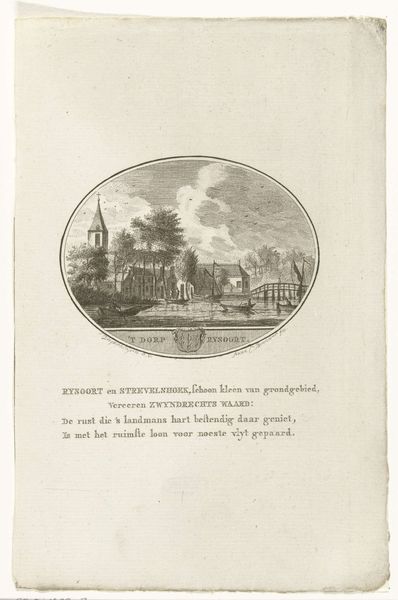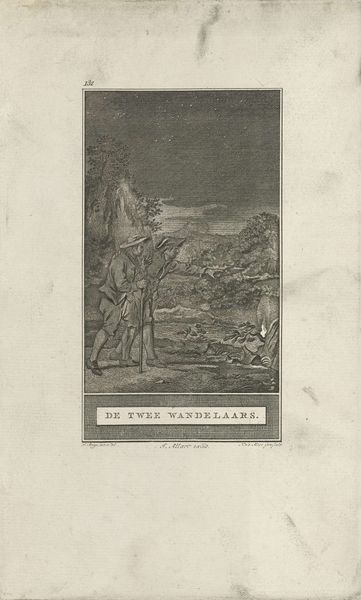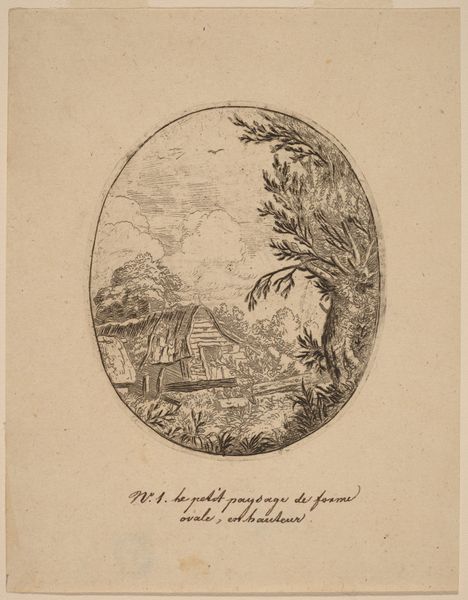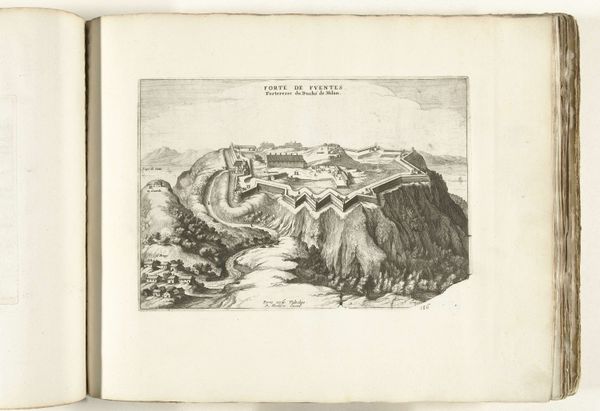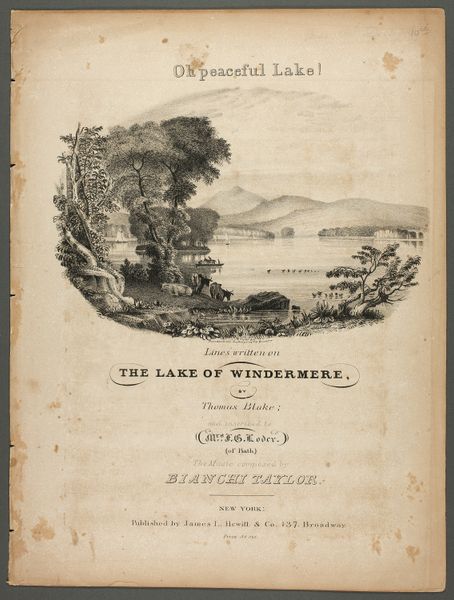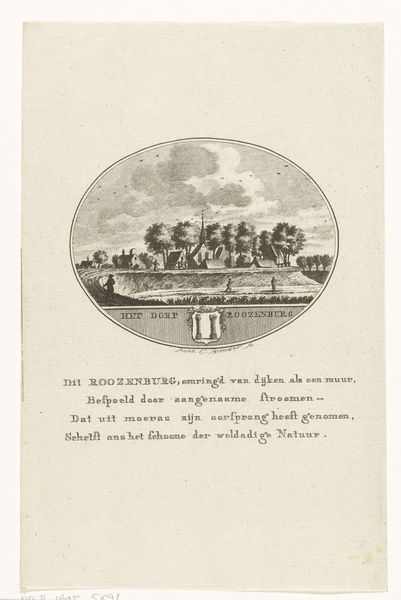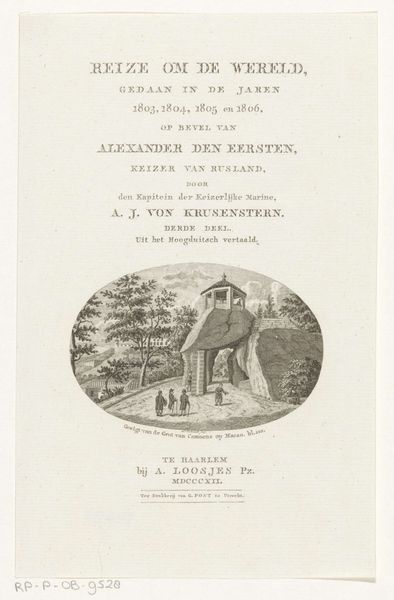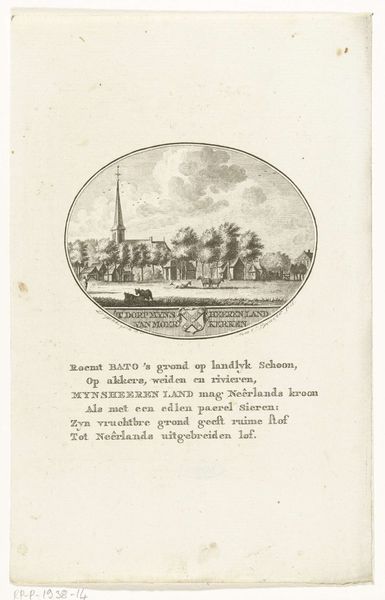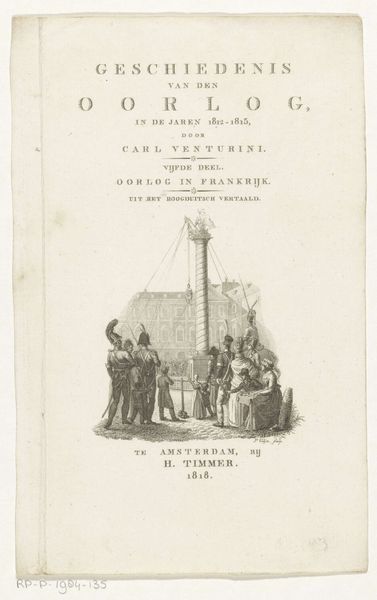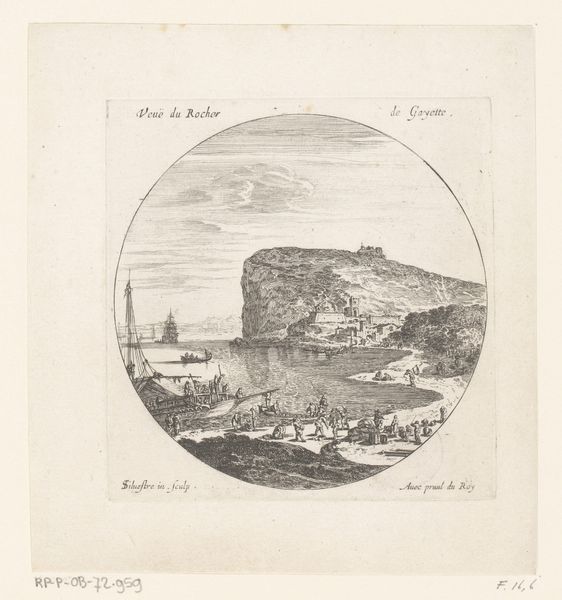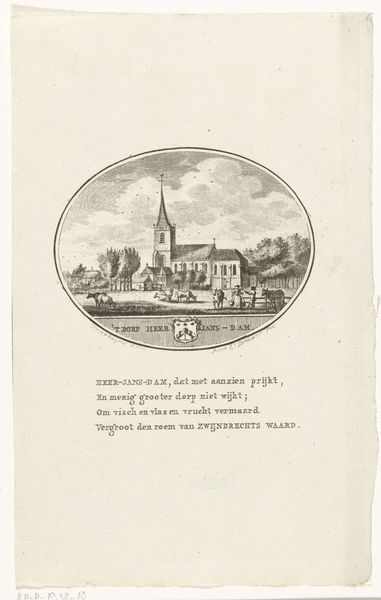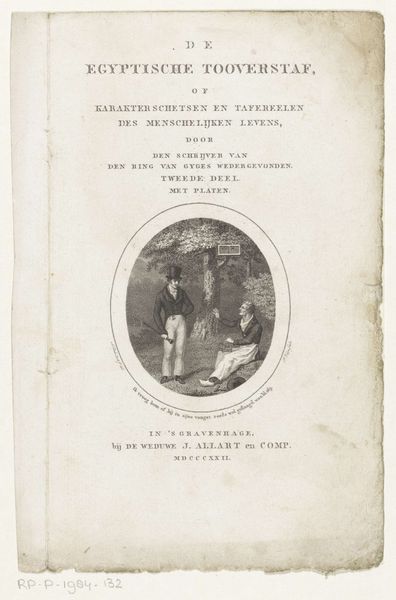
Dimensions: height 244 mm, width 143 mm
Copyright: Rijks Museum: Open Domain
Editor: So, this is Simon Fokke’s “Watersnood in 1775,” created in 1776. It's an engraving on paper, and there's something so bleak about it, yet so classically composed. It reminds me of history book illustrations. How would you interpret this work? Curator: From a historical perspective, this print offers more than just a depiction of a natural disaster. It’s a representation of a shared trauma, made public. Prints like these served as vital visual media, circulating information and shaping public memory in the pre-photography era. Note how the print doesn’t simply record the event; it frames it within a specific moral or religious narrative – judging by the title which starts with "Bespiegeling," roughly meaning "reflection". Do you notice how that might shape its reception? Editor: I see what you mean. The figure raising his hands towards the sky evokes religious suffering and surrender, possibly implying divine judgement about something happening in society. Was that a common sentiment at the time? Curator: Absolutely. Catastrophes like the watersnood were often interpreted through a religious lens, especially in a predominantly Calvinist society like the Netherlands at the time. Furthermore, think about the role of institutions. The Rijksmuseum holds it now, adding another layer of meaning to its cultural relevance. It makes us think: How does placing an image in such a space transform the viewer's experience of history? Editor: That’s fascinating! So, beyond the immediate visual, it's also about how we, even now, are processing a curated version of this past disaster through the lens of art and national history. Curator: Precisely. By analyzing its imagery within the social, cultural, and institutional context, we understand its profound public role. Editor: This has given me so much more to think about in terms of the power that art holds to affect history. Curator: It allows you to question everything, even the stories you already know. That is a sign that learning is happening.
Comments
No comments
Be the first to comment and join the conversation on the ultimate creative platform.
